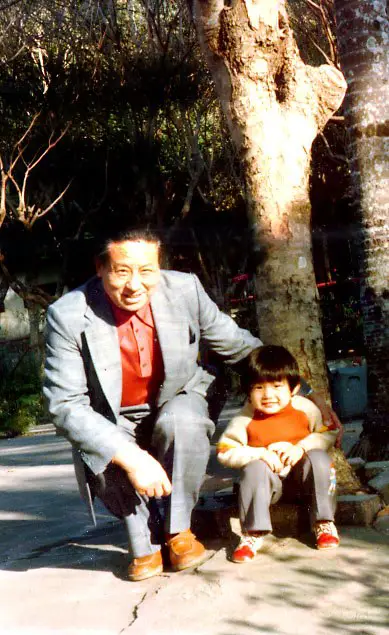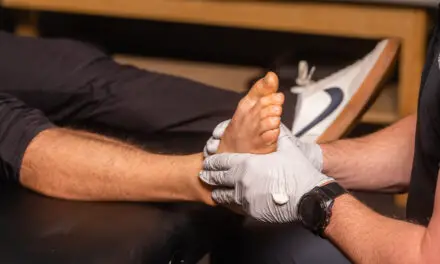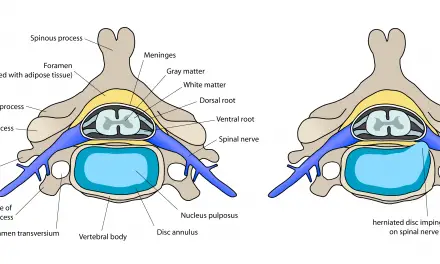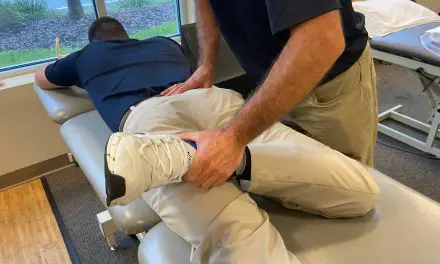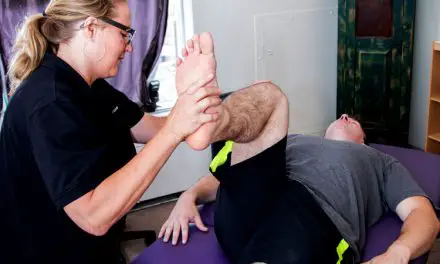Our experience with chronic pain constantly changes throughout our life, even before birth. Oftentimes, it’s a gradual change that we don’t notice until one day, the pain disrupts our daily routine and we take action to alleviate it. While modern pain scientists recognizes that the nervous system plays an important role in how we feel pain, such as with the gate control theory and neuromatrix theory of pain, emerging research in the last 25 years finds that our immune and endocrine systems ally with our nervous system and touch receptors to contribute our pain experience.
According to a 2017 review that was published in Frontiers in Immunology, the amount of stress we get exposed when we were an embryo and within weeks after birth can highly affect the risk of developing higher sensitivity to pain. So it’s not just about having a faulty neural network; it’s also a result of adverse early-life experiences that impact our immune, endocrine, and nervous systems.
Researchers Dr. Ihssane Zouikr and Dr. Bianka Karshikoff cited a few studies that examined the relationship between childhood trauma and depression where the former could predispose the latter. Depressed patients with such traumatic history have higher low-grade inflammatory activity, which is likely caused by a combination of immune and endocrine factors, such as cytokine activity and HPA (hypothalamus-pituitary-adrenal) dysregulation.
While our immune function is partially determined by our genetics, which highly varies among individuals, how well it can protect us from infections and heal after an injury is determined by our early-life experiences. Most of these unique differences stem from non-heritable changes. And this is why it’s very difficult for physicians to diagnose and treat certain diseases.
Pain experiences and nervous system development in the womb
During our first days of development, the environment in the womb and what the mother experiences can shape how our nervous system forms, such as vision, touch, and smell. If we were not exposed to adverse experiences, such as drugs and severe stress from the mother, then our nervous system will develop the best neural connectivity possible. In other words, stable connections that provide the best relay of information between neurons remain, while less efficient ones are dumped (pruning).
But if we were exposed to severe and long-term stress or disease, then synaptic plasticity — the ability of neurons to transfer electrical and chemical signals — could be disrupted during the nervous system’s development.
While vision and hearing undergo dramatic changes and maturation in the first three months to three years of life, complex cognition takes much longer, often well into late adolescence. This cognition includes pain sensation. Infants who also suffer from skin wounds may likely develop higher pain sensitivity due to hyperinnervation of A- and C-fibers.
The nervous system is extremely malleable during the perinatal period of development. As early as 15 to 17 days during embryonic development, myelinated A-fibers that sense touch and pain are the first to penetrate the spinal cord in the lumbar region, followed by C-fibers (also sense pain) into the substantia gelatinosa of the vertebrae (lamina II). This region is where pain is processed in the spinal column.
During the three-week period after birth, A-fibers withdraw from lamina II while C-fibers remain and continue to innervate for life. Any type of insults (e.g. infection, trauma, neglect) could alter the normal process and change how some people experience pain during adulthood.
For example, in some rodent studies, young rats that lack a mature nociceptive system are more sensitive to pain than adults when they are injected with formalin. These young rats exhibit whole-body movements, such as jerking, but older rats would exhibit more specific behaviors, like licking or hind paw shaking. In some studies, younger immature rats that were injected with small doses of a type of opioid had spinal reflexes. However, adult rats had no such reflexes when given the same kind and amount of injection.
Of course, we should be careful when extrapolating rodent studies to humans. Obviously for ethical reasons, scientists should not inject chemicals that induce pain in infants or even adult volunteers. However, studying how rodent brains and neuroendocrine system change, grow, and adapt during environmental stress can help give us humans a glimpse into what maybe happening to our species.
Why poor nerve connectivity may increase the risk of getting chronic pain later in life?
“The components that the pain system is made of develop during certain critical periods of development. In other term, if you try to stimulate or engage the system outside this window of time, it won’t respond,” Dr. Zouikr explained in an email interview with Massage & Fitness Magazine.
“Now if you have an injury whether it is physical (e.g. repeated injections done for premature infants in intensive care units), psychological (e.g. sexual abuse), or infectious (exposure to bacteria) during the critical period when the pain system is still maturing and hasn’t finished its development yet, this will lead to altered neural circuit.
“Think about highways connecting one city to another. It is the same thing for the brain. One brain area connects to another via extensions of neuron which can be dendrites or axons. The same phenomenon is true for the immune system. The fetal immune system is not as mature as the adult one. One good example will be hyperinnervation of nociceptive fibers following injury and the exaggerated pain that follows. So the change in the neural circuit or the immune system can be permanent. But I think we should always keep hope as the adult nervous system can be very plastic.”
How your immune and nervous systems change during your lifetime
Sensing how dangerous or how safe the environment is during our first few weeks after birth establishes the initial setting of how well our immune, endocrine, and nervous systems function in the years to come. Because of the intimate dance between the immune and nervous systems, a single infection could change the central nervous system (CNS) structure and function, leading to an increased risk of behavioral and mental disorders later in life.
For example, mothers who were exposed to influenza, liposaccharides (LPS) from certain types of bacterial infections, and viral RNA during pregnancy could lead to an increased risk of their offspring to getting schizophrenia and autism. LPS, a major component of the outer membrane of Gram-negative bacteria, could cause rats and humans to be more sensitive to heat and mechanical pain and altered peripheral and central sensitization. Although LPS protects the bacteria from its environment, similar to our epithelial cells, it attracts the attention of our immune system, which sends a platoon of immune cells to attack the pathogen.
So when we get exposed to LPS, immune cells release many pro-inflammatory cytokines that creates a concoction that increases pain sensitivity by sensitizing our nociceptors. These chemicals signal the brain to induce certain physiological responses, such as lethargy, reduced sex drive and appetite, fever, and reduced social interaction. This could be a protective behavior to prevent or minimize the spread of the disease.
Zouikr and Karshikoff summarized that infants who are regularly exposed to such immunological stressors can “define its capacity to defeat pathogens later in life.” They also said that increased levels of pro-inflammatory cytokines (IL-1B, TNFα, IL-6) produced by maternal or fetal immune system are linked to abnormal brain development and increased risk of mental illness.
High amounts of IL-6 in amniotic fluid following an infection during pregnancy is also strongly correlated with increased mortality rates and brain injury. Based on these rodent models, they pointed out that neonatal exposure to LPS upregulates gene expression of cytokines, particularly in the hippocampus and limbic system in the brain.
A 2011 trial found that the hippocampus is an important player in modulating pain by upregulating IL-1B expression, a type of cytokine that mediates inflammatory responses, cell proliferation, and apotosis. While there is a strong correlation between IL-1B transcripts and mechanical pain in chronic constriction injury and spinal nerve injury, no one really knows whether changes in IL-1B protein levels contribute to increased pain sensitivity in inflammatory models. In other words, how our brain sensitizes and interprets information from our sensory organs could be affected by our early development of the immune system.
Also, our endocrine system develops similarly early in our life with exposure to LPS. Rodent studies and models revealed that such exposure could have long-term changes in the HPA axis, which is vital to providing feedback and interaction between these glands. Given the neonatal LPS exposure has been shown to increase the release of peripheral and central pro-inflammatory proteins later in life, it is likely that pain sensitivity also increases in adulthood.
For example, research has found that young rats that were injected with LPS is also associated with changes in the spine’s DRG. Such mounting data challenges the mainstream idea that pain solely originates from the nervous system.
Life-long changes of immune and endocrine systems influence our pain experience
While the nervous system plays a huge role in how we experience pain, we now know that the immune and endocrine systems form an alliance in pain modulation with the nervous system.
“I think it will be very beneficial for [manual therapists] to understand and appreciate the multi-systems approach of pain,” Zouikr said. “Pain can results from early life history, psychological status, hormone system dysfunction, or immune dysfunction. If they can appreciate this complexity, they can always do a referral to specialists (immunologists, endocrinologists, clinical psychologists, etc.).”
As for the future of pain research in this field, Zouikr suggested that researchers need to focus more on translational research. “Intensive research has been done in this field of pain, [and] it is now time to translate this knowledge into the bedside.
“I also think we need to do more experiments on higher order animals like chimpanzees and marmosets. The brain project in China is a good example in this direction. I am very optimistic about the future of research in pain especially with the technological advances that the field has witnessed during the last decade with the invention of optogenetics (activating neurons using light) or DREADD (Designer Receptor Exclusively Activated by Designer Drugs) technology that allows to activate or silence with great spatial resolution neuronal activity.
From pain science to the clinic and public
Pain research can be confusing for many patients and clinicians, but understanding such complexity is just the first step in translating research to the public.
Including the neuroimmune and neuroendocrine aspects of pain into the biopsychosocial model of pain will benefit the patient in the long run because when you consider the social environment (e.g. family support) or the psychological well-being of the patient, you will ultimately treat the physiological systems,” Dr. Zouikr said.
“I like to see pain as a multi-system problem, so all the components of pain that I have previously mentioned need to be addressed simultaneously in order to solve the problem.”
Armed with this knowledge of the interaction between both systems, this can help many manual therapists understand pain itself better and why some of their clients or patients have persistent pain for many months or years. It may even help how acute pain could transition to chronic pain.
While pain is much more complex than we previous thought, it actually makes our job easier. As long as we stay within our scope of practice and network with other healthcare professionals who can help us more complex problems, most of what we do is providing a safe environment, a pair of ears to listen, and quality affective touch that decreases the sense of danger to patients and clients.
A native of San Diego for nearly 40 years, Nick Ng is an editor of Massage & Fitness Magazine, an online publication for manual therapists and the public who want to explore the science behind touch, pain, and exercise, and how to apply that in their hands-on practice or daily lives.
An alumni from San Diego State University with a B.A. in Graphic Communications, Nick also completed his massage therapy training at International Professional School of Bodywork in San Diego in 2014.
When he is not writing or reading, you would likely find him weightlifting at the gym, salsa dancing, or exploring new areas to walk and eat around Southern California.

